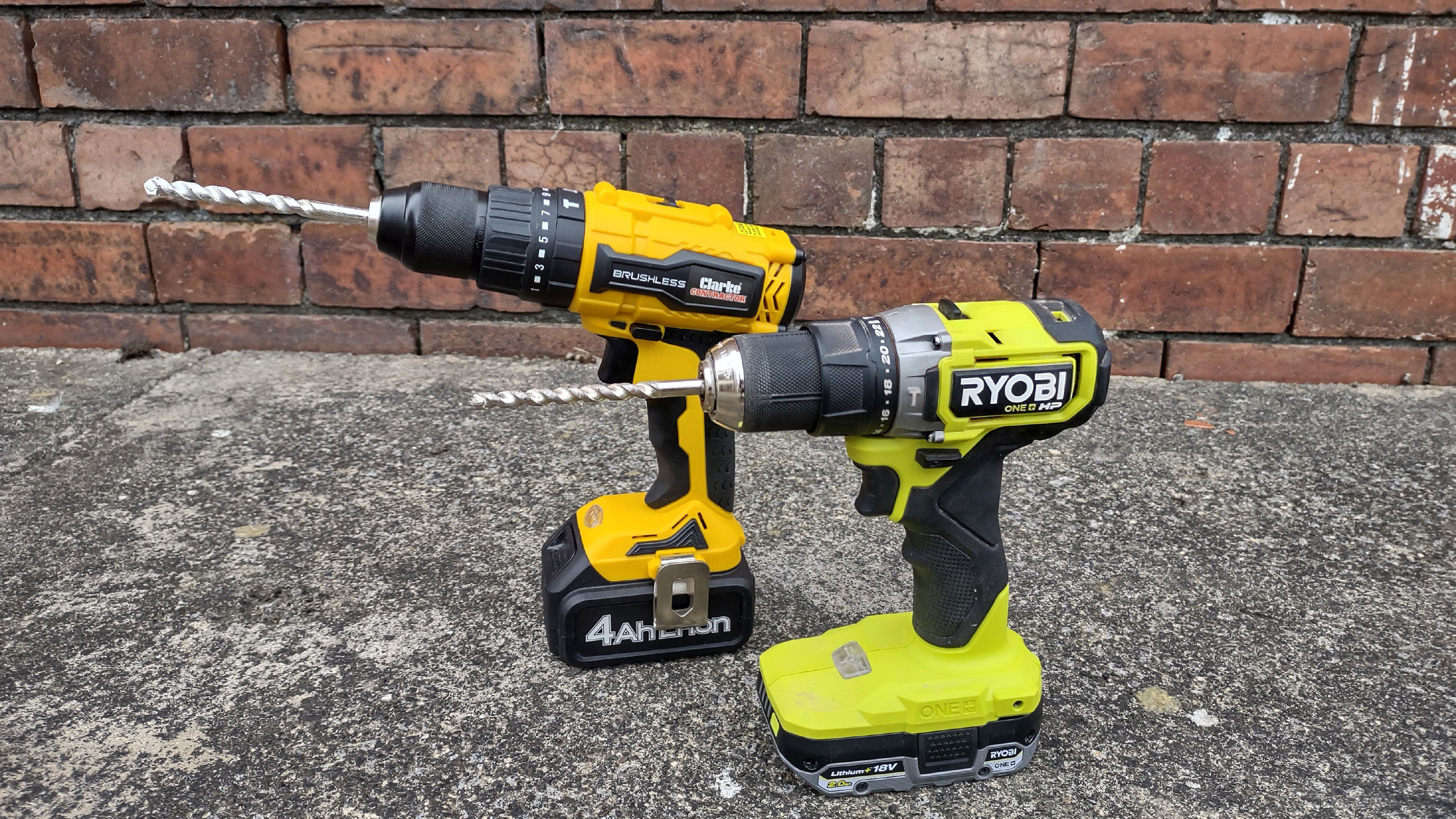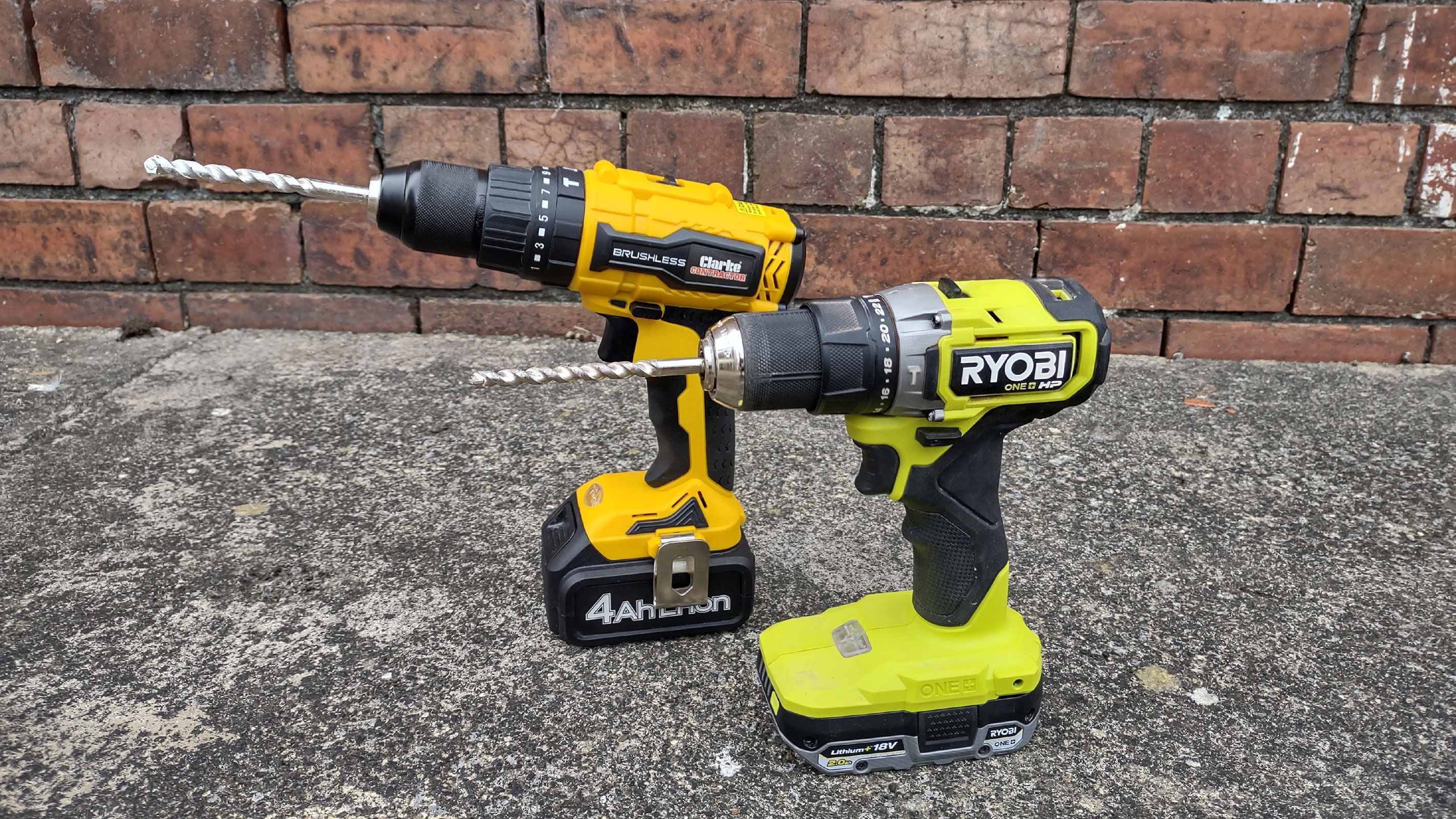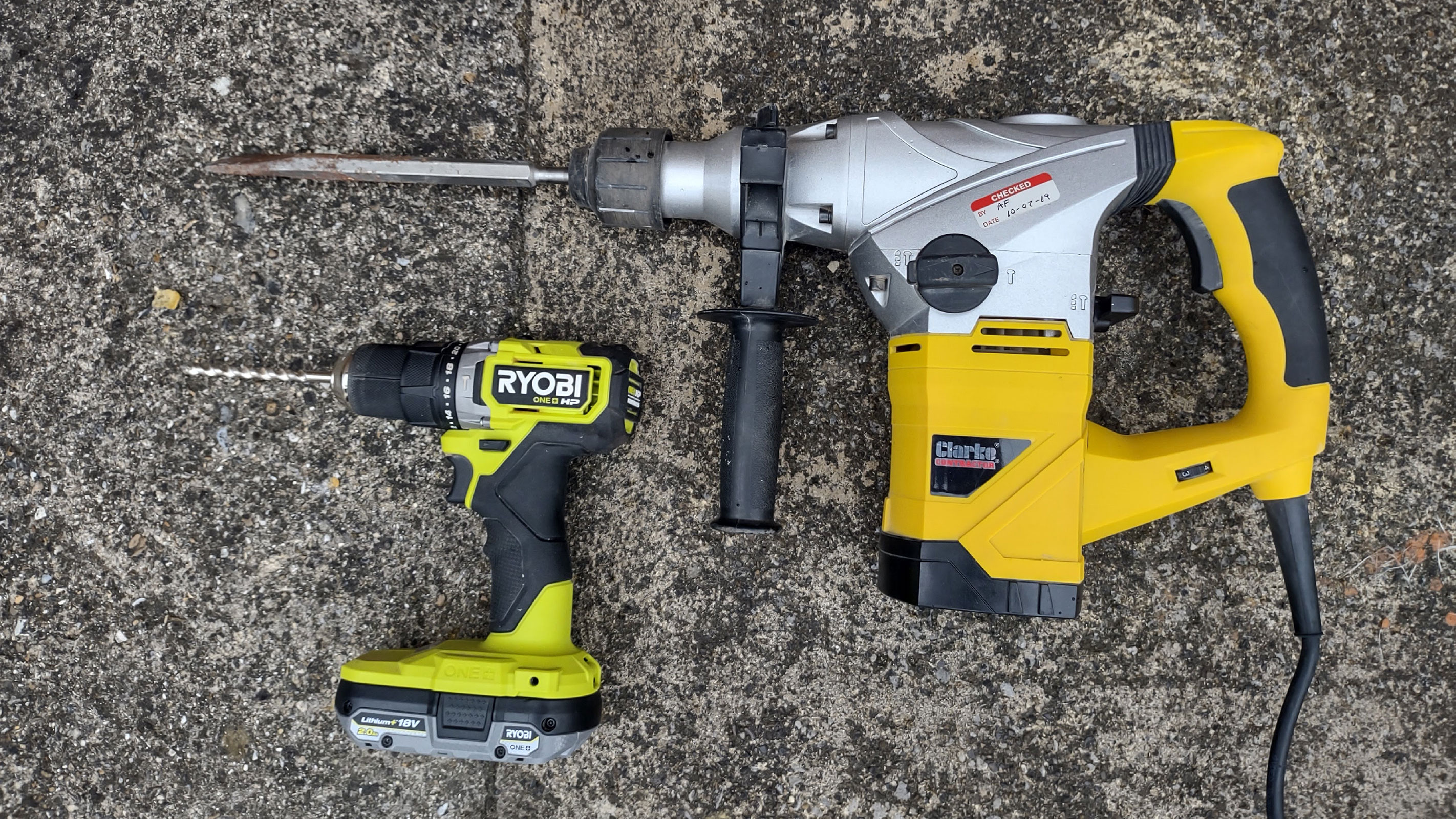
There are many different types of drill, each of which serves a specific purpose. This guide will introduce you to the most popular types you are likely to come across. We'll cover DIY-friendly drills that often feature among the best cordless drills, such as combi drills and drill-drivers, and also some of the heavier-duty tools you might find yourself in need of, such as mains-powered hammer drills.
As well as defining each type of drill, we give examples of the DIY tasks that can be carried out with each one, and provide some best practice tips based on freelance writer and keen DIYer Pete Wise's first-hand experience. Hopefully this will help you find the perfect drill for your project.
Types of drill
As we've said, there are many various types of drill and each of these is suitable for a different kind of job. To help you understand a bit more about each one, we take a look at each in more depth.
What is a drill-driver?
- Modes typically offered: drill; screwdriver
- Usage examples: installing or removing screws; drilling holes in wood or plaster
- Brief definition: a two-mode power drill for routine drilling and screwdriving
A drill-driver combines two fundamental DIY actions in one power tool: drilling and screwdriving.
Drill-drivers can do routine drilling tasks powerfully and effectively – but only when they are used to drill into suitable materials. For example, if you need to drill into wood, metal, plastic or plasterboard, then a drill-driver should do the job well.
However, it’s important to note that drill-drivers are not designed to drill into masonry, such as brick or breeze blocks. When I was a DIY rookie, I made the mistake of trying to use a drill-driver to make holes in a brick wall. After much effort and frustration, I switched to a combi drill with hammer drill functionality, which proved far more effective.
Drill-drivers are a great option for installing or removing screws, when used with an appropriate screwdriver bit. Most examples have multiple torque settings, which can be chosen via a selector on the barrel of the tool.
Bring your dream home to life with expert advice, how to guides and design inspiration. Sign up for our newsletter and get two free tickets to a Homebuilding & Renovating Show near you.
Another major benefit of drill-drivers is that they often come at a much lower price than other types of drill. If you don’t need to drill into hard materials, then there’s not much need to buy a heavier-duty drill than this.
What is a combi drill?
- Modes typically offered: drill; screwdriver; hammer drill
- Usage examples: installing or removing screws; drilling holes in wood, plaster, brick or stone
- Brief definition: an electric drill featuring drill, screwdriver and hammer drill modes
Next up — what is a combi drill? A combi drill gives you all the functionality of a drill-driver, plus a hammer drill mode that makes it possible to drill into hard masonry such as brick, stone or concrete.
Whereas a drill-driver can only rotate the drill bit, a hammer drill can simultaneously move the bit in-and-out at high speed, when used in hammer drill mode. This breaks up hard materials while the bit continues to bore. For proper function, it’s important to use a special masonry bit while drilling into brick or stone.
If, like me, you’re renovating a house, you’ll most probably need a combi drill. I use combi drills – either the Clarke CON180LI from Machine Mart (to which we gave a 5-star review) or the slightly smaller and more manoeuvrable Ryobi 18V ONE+ HP Combi Drill from Ryobi Tools – for a high proportion of the drilling and screwdriving work involved in my DIY projects. These drills are ideal for tasks such as drilling holes in brick walls, drilling and countersinking pilot holes in wooden workpieces, and installing or removing screws.
Most combi drills let you choose between drill, screwdriver or hammer functions by twisting a mode selector on the barrel. Hammer and drill modes are often represented by icons depicting a hammer or drill bit respectively, while screwdriver functionality can be chosen by turning the selector to a numbered setting (or in some cases, an icon). The numbers tell you how much torque – which basically means turning power – will be applied to the screwdriver bit.

How do electric screwdrivers work?
- Modes typically offered: screwdriver
- Usage examples: installing or removing screws; fitting appliances; assembling flat-packed furniture
- Brief definition: a handheld electric screwdriver, used specifically for installing or removing screws
An electric screwdriver is a small, handheld power tool used for installing or unscrewing screws. This tool can save you a lot of time and wrist ache, compared to a manual screwdriver. All you need to do is fit a compatible screwdriver bit, choose the rotational direction (clockwise or anti-clockwise), and squeeze the trigger.
Many electric screwdrivers have a small, lightweight, pistol-like design, while others have a long, straight barrel, similar to an electric toothbrush. The nimble design of these tools makes them much better suited than a drill-driver or combi drill for screwdriving in tight spaces, such as inside flat-packed furniture or in the corners of a room. If you are wondering how to fit a recirculating cooker hood, such as I recently did, you would definitely benefit from one of these.
Most high-quality electric screwdrivers are powered by a rechargeable lithium-ion battery. These tools are not drills, strictly speaking, but they belong to the same wider family of rotary power tools so they're worthy of a mention here.
What is a hammer drill?
- Modes typically offered: rotational hammer drill; hammer only (chisel); drill (in some cases)
- Usage examples: drilling holes in tough brick or stone
- Brief definition: an electric drill designed especially to drill into hard materials such as brick or stone, using a hammer action
If you often need to drill into tough masonry such as brick or stone, then you might benefit from buying a dedicated hammer drill.
Unlike a Jack-of-all-trades combi drill, a hammer drill should be designed solely (or at least mainly) for hammer-drilling. This is often reflected in the design of the drill, which may have features such as an auxiliary handle and lock-on switch. Specialisations like these can make a difference when there’s very difficult hammer-drilling to do, or lots of it.
Whereas most good combi drills are cordless these days, hammer drills are often corded. This is because a mains power supply can enable faster, more powerful drilling than a lithium-ion battery, without running out at any point.

What is an SDS hammer drill
- Modes typically offered: rotational hammer; hammer only (chisel); drill (in some cases)
- Usage examples: drilling holes in brick or concrete (especially wide holes); breaking up concrete; paddle-mixing compounds
- Brief definition: a large, powerful hammer drill used for heavy-duty DIY, compatible with SDS drill bits
And, finally, what is an SDS drill? An SDS hammer drill is essentially a beefed-up hammer drill, with a special ‘slotted drive system’ chuck that accommodates grooved drill bits designed for hammer-drilling, such as these SDS drill bits from B&Q.
You’re only likely to need an SDS hammer drill for the most heavy-duty home renovation tasks. I use a drill of this type – the excellent Clarke Contractor CON1500RDV from Machine Mart – for jobs such as breaking up concrete, or drilling wide holes in masonry. For even tougher tasks such as knocking down internal walls (but not load-bearing walls), you might need to hire an even more powerful tool — known as a kango.
With an SDS plasterer’s paddle attachment fitted in the chuck, an SDS drill can do a very good job of mixing compounds such as tile adhesive, grout or plaster. Start mixing on the slowest speed setting, to minimise mess and wastage.

Pete Wise is a freelance writer and keen DIYer from Leeds. Pete's tool reviews have featured in titles including Homebuilding & Renovating, Ideal Home and The Independent. He also writes features and news articles for publications such as The Guardian, BBC Good Food and T3. When he isn't busy writing, Pete can often be found at libraries, pubs and live music venues. He finds tile-cutting strangely zen.
Pete Wise is a freelance writer and keen DIYer from Leeds. Pete's tool reviews have featured in titles including Homebuilding & Renovating, Ideal Home and The Independent. He also writes features and news articles for publications such as The Guardian, BBC Good Food and T3. When he isn't busy writing, Pete can often be found at libraries, pubs and live music venues. He finds tile-cutting strangely zen.
